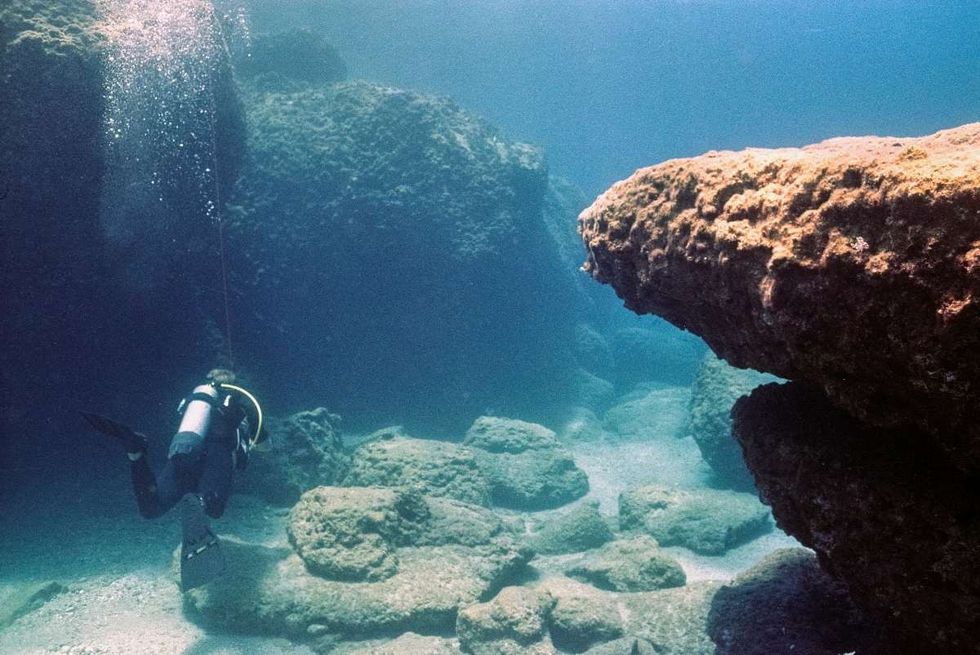In 1959, the Chinese government decided to build a hydroelectric dam, which required flooding the 600-year-old city of Shi Cheng. Over 300,000 residents were evacuated to make way for the rising waters that eventually submerged the entire city. Today, Shi Cheng, known as the "Lion City," rests nearly intact 40 meters (131 feet) beneath the surface of Qiandao Lake, near Shanghai, China, according to IFL Science.

Also known by the name “Lion City,” the ancient city of Shi Cheng is thought to have been established either during the Han dynasty between 25-200 CE, or the Tang dynasty (618-907AD), but it is believed that it blossomed mostly during the Ming and Qing dynasties (1368 to 1912 AD). It derives its name from its location, which lies in the vicinity of Wu Shi Mountain, also called “Five Lion Mountain.”

Once it was flooded, the city was “forgotten,” until the year 2001 when the Chinese government organized a diving expedition to explore the remnants of the city underwater. The expedition’s report was later published in an article by Chinese National Geography. According to the report, divers found that the entire city was sleeping alongside tranquil water plants, with all its magnificent architectural elements nearly preserved, probably due to no human intrusion. In the dark depths of the lake, the city loomed, shadowy and clear, what would typically have been covered in sediment and silt.

As the divers flashed light on the dark underwater terrain, the faint green light projected a small circle of light in the front. On a boat above the surface, a camera was recording and displaying the entire sighting to the team onboard. As the divers approached the circle of light, the lush algae trembled in the swirling water. Soon, they came across a giant shadow, that gradually unveiled itself to reveal gigantic blocks of bluestone, that was later found to be the city’s gate. Stone slabs and archways were still intact. Even more so, nearly 265 memorial archways, which were probably built by the people who had to move away from the city, were found to be in good condition.
When the team reconstructed the “Lion City,” they depicted that the city had five gates with watchtowers studded on top of each gate. The roads were cemented with slabs of slate, gravel, and lime. The sides of the roads were inlaid with fine sand, lime, and tiny pebbles. The city also accommodated beautiful stonework in the form of various animals, including lions, dragons, and phoenixes, along with historical inscriptions that date back to 1777.

According to The Mirror, the city was opened to the public as a diving tourist spot in 2017. However, diving is allowed only for those who are well-versed in diving experience, which includes deep-water diving, night diving, and buoyancy. Otherwise, The site is too deep and dark and considered unsafe for visitors. “It is dark, cold, and silent,” said Lou Shanliang, who was one of the first divers to reach the depths of the lake, per The Smithsonian Channel’s 2018 YouTube video. “It’s like the surface of the Moon. There is no life,” he described, and said, “It’s scary.”


















 Image frmo Scientific Reports of ancient artwork. Image Source:
Image frmo Scientific Reports of ancient artwork. Image Source:  Image frmo Scientific Reports of ancient artwork.Image Source:
Image frmo Scientific Reports of ancient artwork.Image Source:  Image frmo Scientific Reports of ancient artwork.Image Source:
Image frmo Scientific Reports of ancient artwork.Image Source: 

 It's difficult to imagine seeing a color and not having the word for it. Canva
It's difficult to imagine seeing a color and not having the word for it. Canva
 Sergei Krikalev in space.
Sergei Krikalev in space. 


 The team also crafted their canoe using ancient methods and Stone Age-style tools. National Museum of Nature and Science, Tokyo
The team also crafted their canoe using ancient methods and Stone Age-style tools. National Museum of Nature and Science, Tokyo The cedar dugout canoe crafted by the scientist team. National Museum of Nature and Science, Tokyo
The cedar dugout canoe crafted by the scientist team. National Museum of Nature and Science, Tokyo